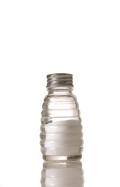Author Interviews, Blood Pressure - Hypertension / 08.11.2016
Ambulatory vs. Office Blood Pressure as Inclusion Criteria for the SPRINT Trial
MedicalResearch.com Interview with:
Alejandro de la Sierra, MD, PhD, FESC, FAHA
Professor of Medicine
Head, Internal Medicine Department
Hospital Mutua Terrassa
University of Barcelona, Spain
MedicalResearch.com: What is the background for this study? What are the main findings?
Response: The Systolic Blood Pressure Intervention (SPRINT) trial has demonstrated that a strategy of systolic blood pressure (BP) reduction to a goal of 120 mmHg in selected hypertensive patients prevents the development of cardiovascular complications and mortality. The trial used automated office BP measurements. However, ambulatory BP monitoring (ABPM) has demonstrated to be superior to office BP in predicting cardiovascular events and mortality. We aimed to evaluate ambulatory BP values in hypertensive patients from the Spanish ABPM Registry who meet eligibility criteria for the SPRINT trial.
The results indicated that one third of our hypertensive population met such eligibility criteria and that ABPM values were considerably lower than office BP, with 42% of subjects having daytime BP below 130 mmHg and 21% with 24-hour BP below 120 mmHg.
(more…)

 MedicalResearch.com Interview with:
Prof Andrew Mente PhD
Clinical Epidemiology and Biostatistics, McMaster University
Hamilton, Canada
MedicalResearch.com Editor's Note: Dr. Mente discusses his Lancet publication regarding salt intake below. Dr. Mente's findings are disputed by the American Heart Association (AHA). A statement from the AHA follows Dr. Mente's comments.
MedicalResearch.com: What is the background for this study? What are the main findings?
Prof. Mente: Several prospective cohort studies have recently reported that both too little and too much sodium intake is associated with cardiovascular disease or mortality. Whether these associations vary between those individuals with and without high blood pressure (hypertension) is unknown.
We found that low sodium intake (below 3 g/day), compared to average intake (3 to 6 g/day), is associated with more cardiovascular events and mortality, both in those with high blood pressure and in those without high blood pressure. So following the guidelines would put you at increased risk, compared to consuming an sodium at the population average level, regardless of whether you have high blood pressure or normal blood pressure.
High sodium intake (above 6 g/day) compared to average intake, was associated with harm, but only in people with high blood pressure (no association in people without high blood pressure).
MedicalResearch.com Interview with:
Prof Andrew Mente PhD
Clinical Epidemiology and Biostatistics, McMaster University
Hamilton, Canada
MedicalResearch.com Editor's Note: Dr. Mente discusses his Lancet publication regarding salt intake below. Dr. Mente's findings are disputed by the American Heart Association (AHA). A statement from the AHA follows Dr. Mente's comments.
MedicalResearch.com: What is the background for this study? What are the main findings?
Prof. Mente: Several prospective cohort studies have recently reported that both too little and too much sodium intake is associated with cardiovascular disease or mortality. Whether these associations vary between those individuals with and without high blood pressure (hypertension) is unknown.
We found that low sodium intake (below 3 g/day), compared to average intake (3 to 6 g/day), is associated with more cardiovascular events and mortality, both in those with high blood pressure and in those without high blood pressure. So following the guidelines would put you at increased risk, compared to consuming an sodium at the population average level, regardless of whether you have high blood pressure or normal blood pressure.
High sodium intake (above 6 g/day) compared to average intake, was associated with harm, but only in people with high blood pressure (no association in people without high blood pressure).